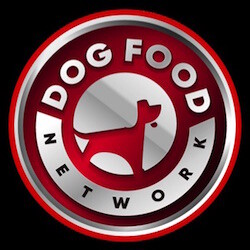Pitbull Food Aggression: Understanding the Causes, Recognizing the Signs, and Implementing Effective Training Strategies
Introduction:
Pitbulls, with their robust physiques, intelligent eyes, and hearts full of unwavering loyalty, have secured a special place in the homes and hearts of many. Known for their courage and strength, these remarkable dogs also exhibit a deep affection for their families, often forming an inseparable bond with their human companions. However, beneath their muscular exterior and spirited personality, Pitbulls, like all dogs, may exhibit certain behaviors that can cause concern for their owners. One such behavior is food aggression, a form of resource guarding that can become apparent in certain situations. Understanding the roots of this behavior is essential for addressing it effectively and maintaining a peaceful household.
Food aggression in Pitbulls can be identified through various signs, including growling, snapping, or adopting a protective posture around their food. This behavior stems from a deep-seated instinct to safeguard valuable resources, a trait inherited from their ancestors. Recognizing these signs early is crucial for taking timely and appropriate action.
The approach to managing food aggression in Pitbulls involves a combination of patience, consistency, and the application of positive reinforcement training techniques. Strategies such as desensitization, which gently accustoms the dog to human presence near their food, and counter-conditioning, associating human approach with positive outcomes, have proven effective. Teaching commands that enhance impulse control, such as “leave it” or “wait,” is also beneficial in addressing this issue.
Search: Best Selling Pit Bull Products Online
It’s vital for owners to tackle this challenge with empathy, focusing on building trust and positive associations rather than resorting to punishment. Seeking professional advice from a certified dog trainer or a veterinary behaviorist is often necessary to customize a training program that meets the dog’s individual needs and ensures safety for all involved. By understanding the underlying causes of food aggression and employing safe, effective training methods, Pitbull owners can help their dogs overcome this issue, strengthening the bond between them and promoting a harmonious living environment.
What Causes Food Aggression in Pitbulls?
Food aggression, or resource guarding, is an instinctual behavior in dogs, including Pitbulls, where they display defensive actions to protect valued resources, primarily food. This behavior can range from subtle cues to more overt actions such as snapping or biting. Understanding that food aggression often stems from insecurity or underlying issues is crucial. Common causes include:
- Early Life Experiences: Puppies that faced competition for food or experienced scarcity may develop a tendency to guard their resources fiercely.
- Survival Instinct: The innate drive to protect essential resources for survival can manifest in food aggression, despite domestication.
- Medical Conditions: Pain or discomfort can lead dogs to become irritable and more likely to guard their food aggressively.
- Anxiety and Fear: A dog may guard resources more diligently if they feel anxious or perceive their environment as unpredictable or threatening.
- Unintentional Reinforcement: Dogs may learn that aggressive behaviors effectively keep others away from their food, reinforcing the guarding behavior.
Preventing Pitbull Food Aggression Through Early Socialization
Preventing food aggression in pitbulls is fundamentally about fostering trust and promoting positive interactions from a young age. By instilling a sense of security and positive associations with food and feeding times, responsible breeders and pet owners can play a pivotal role in shaping a pitbull puppy’s behavior and outlook. Here are enhanced strategies for early socialization to prevent food aggression:
- Promote Resource Sharing: Utilize individual feeding bowls for puppies but place them in close proximity to one another. This arrangement encourages communal eating while maintaining individual boundaries, teaching puppies that they don’t need to compete for their meals.
- Foster Positive Human Associations: Integrate humans into the feeding process in a gentle and reassuring manner. This can be achieved by hand-feeding the puppies, which helps them associate human hands with the provision of food and care, or by incorporating high-value treats into their meals. These actions help to build trust between the puppies and their human caregivers.
- Acclimate Puppies to Human Presence During Feeding: Gradually get the puppies accustomed to human proximity at meal times. This can include sitting nearby while they eat or gently touching them and their bowls as they feed. Such interactions should be positive, reinforcing the idea that human presence is not a threat to their resources.
- Introduce Controlled Feeding Scenarios: Create situations where puppies are fed in the presence of various stimuli, including the presence of other pets and people, to desensitize them to potential distractions and perceived threats. This helps in developing a calm and composed demeanor around food.
- Implement Waiting Games: Teach puppies to wait for their food until given a signal. This practice instills patience and impulse control, reducing the likelihood of food aggression developing as they mature.
- Socialize Beyond Feeding: Extend socialization efforts beyond feeding times to include a variety of environments, sounds, and experiences. This broader socialization ensures that puppies grow up to be well-adjusted adults, comfortable with different situations, and less likely to exhibit aggressive behaviors.
- Positive Reinforcement and Reward-based Training: Encourage good behavior around food and other resources with positive reinforcement. Reward puppies for calm and non-aggressive behavior during feeding and when sharing resources with both humans and other animals.
Recognizing the Early Signs of Pitbull Food Aggression
Recognizing the early signs of food aggression in pitbulls is crucial for implementing timely and effective strategies to address this behavior. Early intervention can prevent the escalation of aggression and ensure the safety of both the dog and its human family. Here are expanded signs and additional indicators to watch for:
- Stiffening of the Body: Notice if your pitbull’s body becomes tense or they adopt a rigid posture when someone approaches them during mealtime. This is often the first sign of discomfort and a precursor to more aggressive responses.
- Intense, Focused Stare: A concentrated glare at anyone coming close to their food indicates that your pitbull perceives them as a threat. This intense stare is a clear sign that they are on high alert and prepared to defend their meal.
- Low Growls to Snarls: The sound of a low growl, which may increase in intensity as the perceived threat gets closer, is a vocal warning. If these growls escalate to snarls, it shows an increased level of threat and aggression.
- Air Snapping or Lunging: These are more overt actions where the pitbull attempts to scare off the approaching person or animal without making physical contact. It’s a clear step up in aggression, indicating they feel their warning signs have been ignored.
- Biting: The most severe and dangerous form of food aggression, biting occurs when all previous warning signs have been disregarded or the dog feels extremely threatened.
- Guarding Behavior: Beyond the immediate signs, watch for behaviors indicating your pitbull is guarding their food. This can include hovering over their bowl, rushing to eat when someone approaches, or attempting to hide or move their food away from others.
- Changes in Eating Habits: A sudden rush to eat or a refusal to eat unless alone can also be subtle signs of food-related anxiety or aggression, indicating discomfort with the presence of others during meal times.
- Body Blocking: Your pitbull may physically place themselves between a person or another pet and their food, using their body to block access. This behavior suggests a desire to protect their resources at all costs.
Management and Safety Measures
Effective management and safety measures are essential in addressing food aggression in pitbulls, ensuring a safe environment for both the dog and its family. It’s important to approach this behavior with understanding and caution rather than punishment, which can inadvertently increase aggression levels. Here are expanded guidelines and additional tips for managing this issue:
- Refrain from Punishment: Punishing your pitbull for showing warning signs of food aggression can confuse them and may lead to unpredictable and escalated aggressive responses. Instead, focus on understanding and addressing the root cause of the behavior.
- Create a Safe Feeding Space: Designate a calm, quiet area for your pitbull to eat without disturbances. This can help reduce their need to guard their food. Using barriers, such as baby gates, can also help create a physical separation between your pitbull and others during meal times, minimizing stress and potential conflict.
- Seek Veterinary Advice: Sometimes, food aggression can be linked to underlying medical conditions. Pain, dietary deficiencies, or other health issues may exacerbate aggressive tendencies. A thorough check-up with a veterinarian can help identify any medical problems that need to be addressed.
- Structured Feeding Routine: Establish a predictable feeding schedule. Consistency in feeding times and locations can help reduce anxiety around meal times and reinforce a sense of security.
- Supervised Interactions: If your pitbull shows signs of food aggression, closely supervise all interactions around food. This includes monitoring the presence of other pets and children, who may not recognize the warning signs of food aggression.
- Behavioral Training and Socialization: Engage in training programs that focus on positive reinforcement and behavior modification. Professional trainers or behaviorists can offer personalized strategies that encourage calm and non-aggressive behavior around food.
- Environmental Enrichment: Providing a variety of toys and activities can help reduce overall stress and anxiety in your pitbull, which in turn can lessen food aggression. Mental and physical stimulation is key to a well-balanced dog.
- Use of High-Value Rewards: In training sessions, use high-value treats to reward and encourage non-aggressive behavior around food. This can help your pitbull associate positive experiences with the presence of people during meal times.
Addressing Resource Guarding Beyond Food
Identify what your Pitbull values and apply similar counterconditioning and training techniques to manage guarding behavior around non-food items for a holistic approach.
Training: A Path to Trust and Positive Associations
Effective training for food aggression involves counterconditioning to shift negative associations with people near their food to positive ones and implementing techniques that build trust, such as the “Hand for a Paw” technique.
With commitment and the right strategies, owners can guide their Pitbulls through the challenges of food aggression, fostering a safer, more trusting relationship and a happier home environment for everyone involved.
Training Methodologies for Pitbull Food Aggression
- Desensitization: Gradually expose your Pitbull to the presence of people near their food in a non-threatening manner. Begin by standing at a distance where your dog feels comfortable while they eat, and progressively decrease this distance over time, always ensuring your dog remains relaxed.
- Counter-Conditioning: Change your Pitbull’s emotional response to someone approaching their food from negative to positive. This can be achieved by associating the approach of a person with something good, like their favorite treat or a special toy, thereby shifting their perspective from protective to welcoming.
- Impulse Control Commands: Teach your Pitbull commands like “leave it” or “wait.” These commands help them learn self-control and patience, reducing reactive behaviors over time. Training should be done outside of meal times initially, in a controlled environment with fewer distractions.
Practical Training Scenarios
- Scenario: Adding Treats to the Meal: Begin by adding high-value treats to your Pitbull’s food bowl while they are eating, gradually working up to hand-feeding these treats. This practice builds trust and a positive association with human hands near their food.
- Scenario: The “Trade-Up” Game: Teach your Pitbull that giving up something good (like their current food or toy) will result in getting something even better. This can be practiced with toys first, then applied to feeding situations, helping them understand that human intervention during mealtime is beneficial, not threatening.
- Scenario: Mealtime Manners: Encourage polite behavior by asking your Pitbull to sit or perform another command before placing their food down. This reinforces the idea that food comes from positive interactions and compliance with commands, further establishing your role as the provider of all good things.
Important Training Considerations
- Seek Professional Guidance: If your Pitbull’s food aggression is severe or you’re uncertain about handling the situation safely, consult with a professional dog trainer or behaviorist. They can offer tailored advice and hands-on assistance.
- Ensure Safety: Always prioritize the safety of both humans and pets in the household. This may involve feeding your Pitbull in a separate space or using barriers if needed to prevent any accidents.
- Patience and Consistency: Overcoming food aggression is a process that requires time, patience, and consistency. Celebrate small victories and remain committed to the training plan.
By adopting a thoughtful approach to training and management, you can help your Pitbull overcome food aggression. This not only ensures a safer environment for everyone but also strengthens the bond you share with your dog, based on mutual respect and understanding. Remember, the goal is to create positive associations with food and feeding time, making every meal a stress-free experience for your Pitbull.



